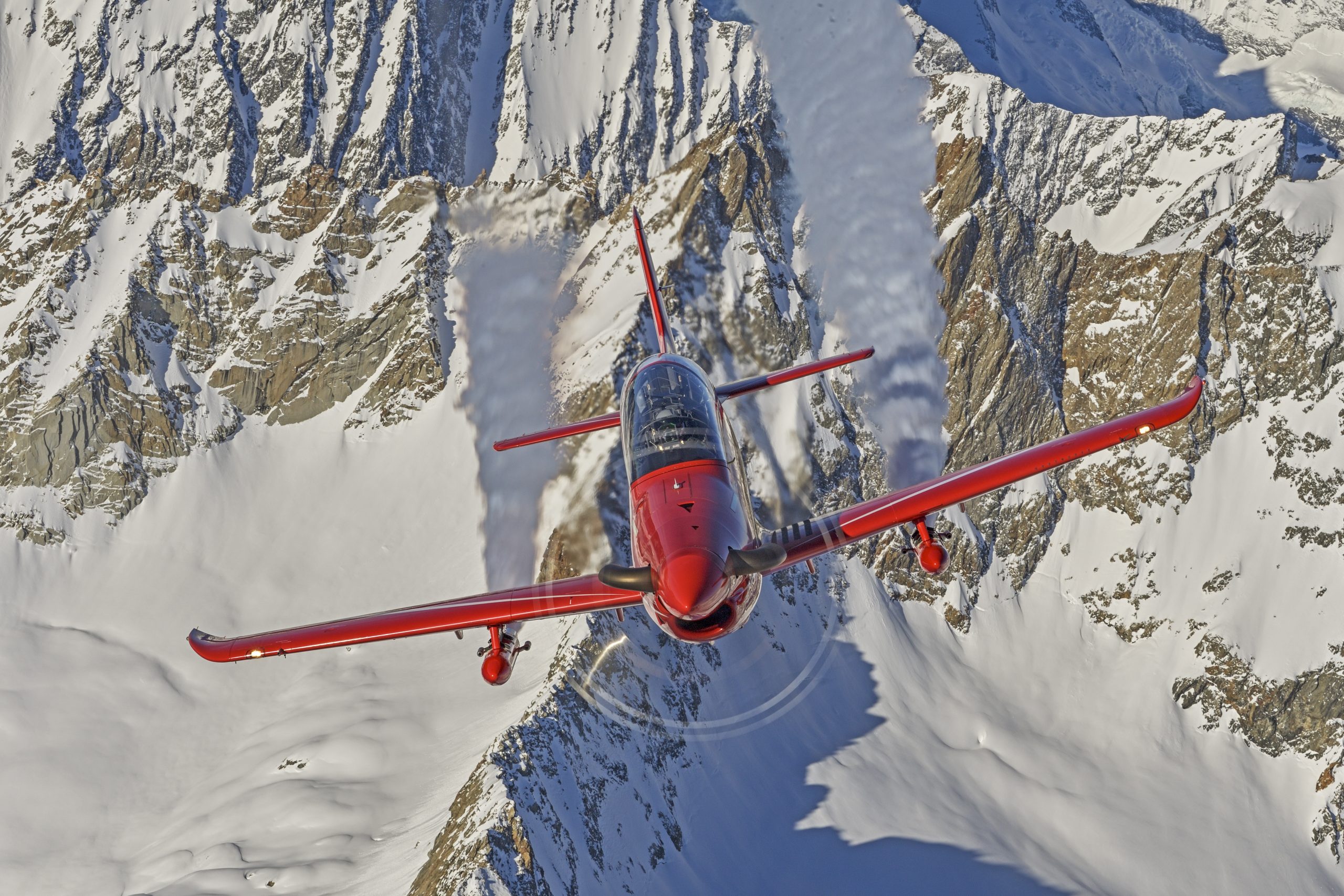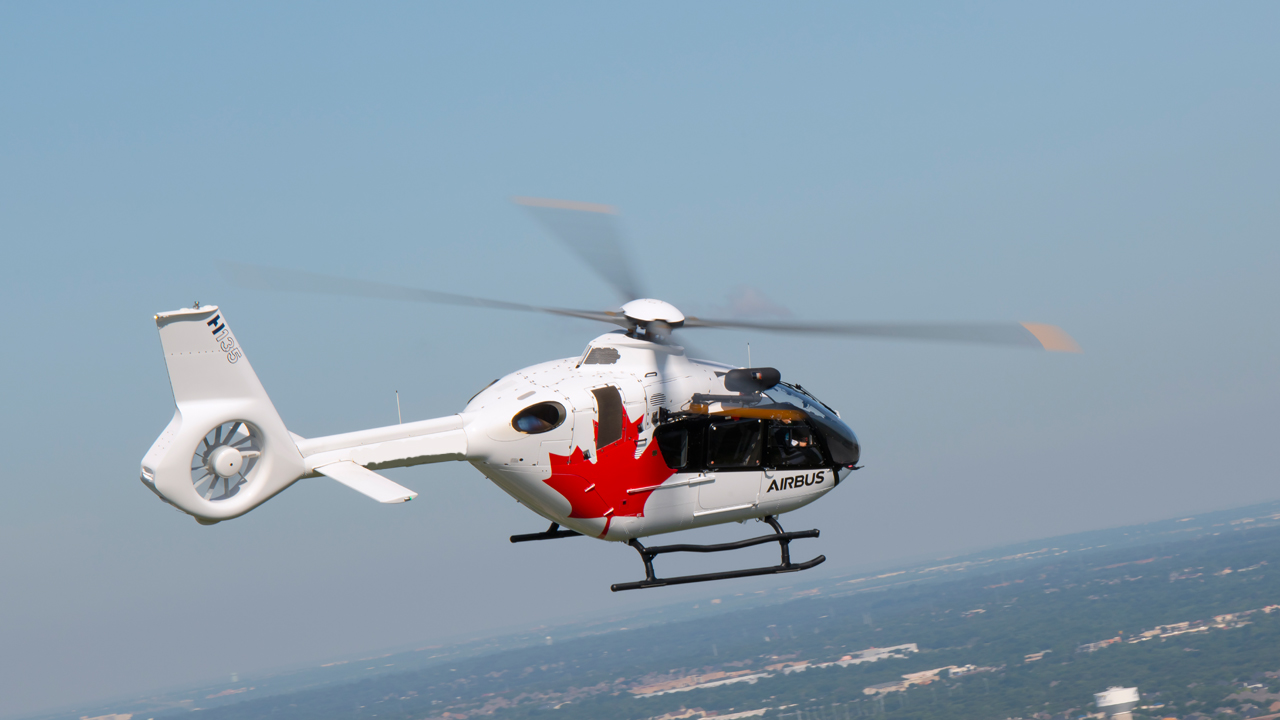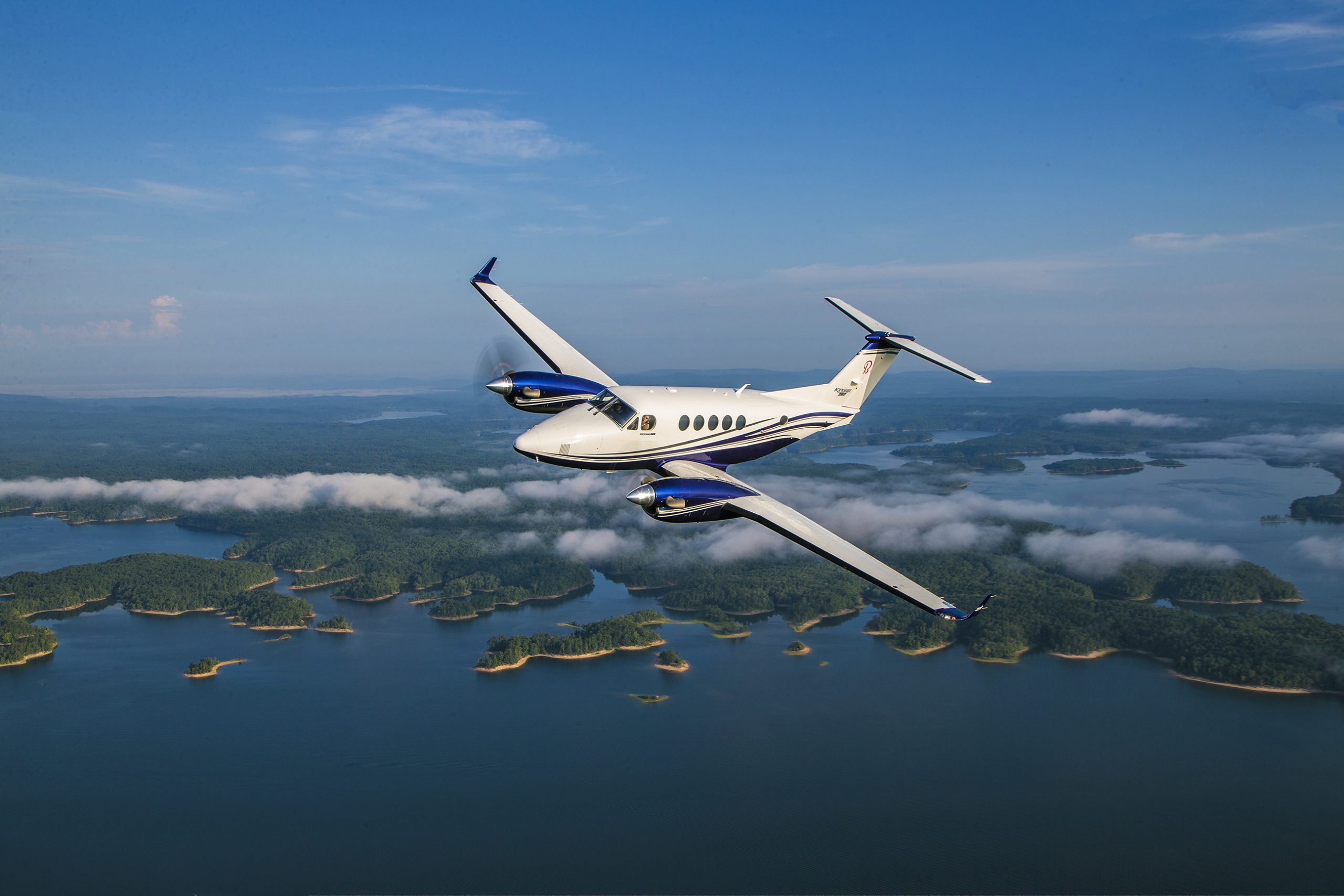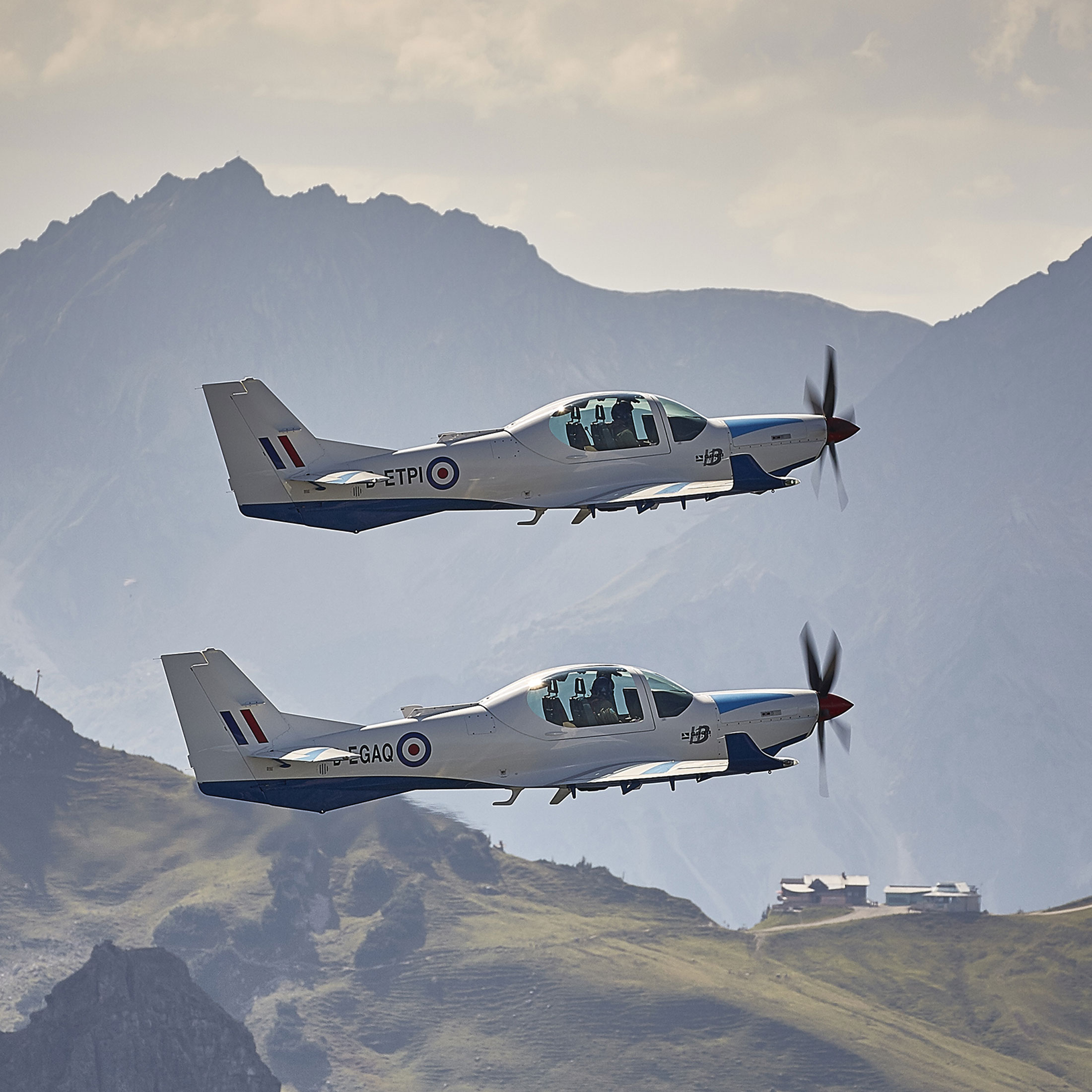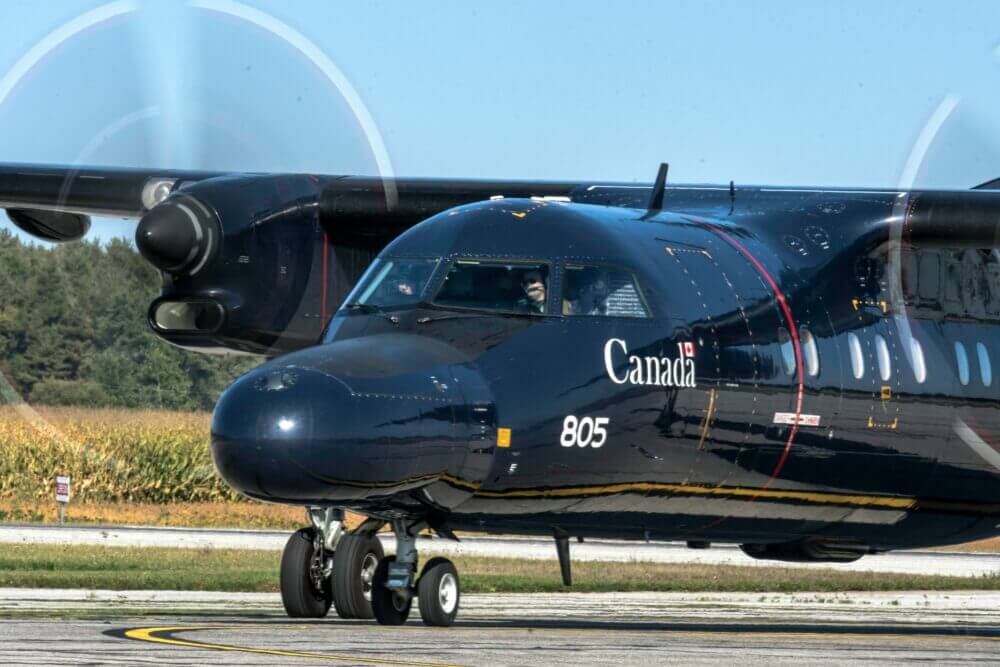This article originally appeared in the 2023 edition of RCAF Today and on the SKIES Magazine website.
For the RCAF’s Future Aircrew Training (FAcT) program, the selected bidder is proposing a new mix of fixed- and rotary-wing aircraft.
The next generation of Royal Canadian Air Force (RCAF) aircrew could earn their Wings on the Grob 120TP, Pilatus PC-21, Textron/Beechcraft King Air 260, Airbus H135, and Dash 8-400.
The mix of fixed- and rotary-wing aircraft are part of a proposal by SkyAlyne Canada to deliver the RCAF’s Future Aircrew Training (FAcT) program.
The partnership between CAE and KF Aerospace was selected over a bid by a joint venture of Babcock Canada and Leonardo Canada in July as the preferred option to prepare future pilots and sensor operators. The government is expected to award a contract in 2024.
“It is critical that current and future [RCAF] pilots have the most advanced training and equipment available to ensure they can deliver on the important work that we ask of them,” then Defence Minister Anita Anand said in a statement.
“This program will help ensure Canada can continue to defend North America, enhance our Arctic sovereignty, and meet our NATO and NORAD obligations in the face of current and emerging threats. Canadians can be confident that this competitive process will deliver the best results for our Canadian Armed Forces for decades to come.”
Public Services and Procurement Canada (PSPC) said it will be working with SkyAlyne on the contract details and on the transition process from the RCAF’s current pilot training system, which is provided in several phases through two maturing contracted programs, Contracted Flying Training and Support (CFTS) and NATO Flying Training in Canada (NFTC).
CFTS is delivered by Allied Wings, a consortium led by KF Aerospace, from 3 Canadian Forces Flying Training School (CFFTS) at Southport Aviation Centre in Portage La Prairie, Manitoba. NFTC is supplied by CAE Military Aviation Training from 2 CFFTS at 15 Wing Moose Jaw, Saskatchewan. Both contracts are set to expire in 2027.
Air combat systems officers (ACSOs) and airborne electronic sensor operators (AES Ops) are currently trained by the Air Force at 402 Squadron at 17 Wing Winnipeg, Manitoba.
Under the SkyAlyne proposal, classroom, simulator, and in-flight instruction would continue from the same three locations — Moose Jaw, Portage la Prairie, and Winnipeg — but in a re-imagined sequence and format. And within rebuilt facilities and with new equipment and fleets of training aircraft.
Pilot candidates will start with basic flying training (BFT) at 15 Wing, and then graduate to either advanced flying training (AFT) rotary wing (RW) or fixed wing (FW). The RW course will be provided at the Southport facility while FW students will continue in Moose Jaw.
Those students that complete the AFT-FW course will be assigned to either AFT Multi-Engine or AFT Jet (AFT-J) training at Southport and Moose Jaw, respectively. Under the new program, SkyAlyne will also assume the training for ACSOs and AES Ops at 17 Wing.
Fixed-wing and rotary-wing pilots, as well as ACSOs and AES Ops, will then receive their Wings before proceeding to an operational training unit for aircraft type specific training.
AFT-Jet candidates will advance to the Fighter Lead-in Training (FLIT) program, likely at 4 Wing Cold Lake, Alberta. The current RCAF FLIT program is on pause while the government identifies a new provider.
Until the Future FLIT course is ready, in the 2030-2032 timeframe, ab initio fighter training will be conducted at the Euro-NATO Joint Jet Pilot Training (ENJJPT) program in Texas, the International Flight Training School (IFTS) in Italy, and the Finnish pilot training academy.
“The training program we have designed for FAcT enables evolution,” said Stéphane Hébert, FAcT program manager, highlighting an Air Force concern about the current training structure. “Whereas past programs were more rigid, FAcT is built for flexibility and agility and that will allow us to adapt to new innovations and help keep RCAF training relevant and keep new and emerging technologies at the forefront.”
“Our training solution … is built on a foundation of experience and expertise, but we have fully embraced the opportunity to lean forward into the digital age with advanced data analytics and a fully digital environment,” added Peter Fedak, head of operations.
Most of SkyAlyne’s technical team consists of former RCAF military instructors and leaders, which “enables [us] to understand Canada’s needs and deliver a very efficient program that is adaptable to the evolving needs of the students and the instructors,” noted Janin Blanchet, special advisor on rotary-wing training.
That expertise has helped inform the aircraft the company selected for its bid.
For the BFT, the Grob 120TP offers a mature successor to the 120A. It is used as a military training platform around the world and features a digital cockpit with a comprehensive avionics layout, side-by-side student and instructor seating, in a full composite airframe with aerobatic capability.
On the AFT fixed-wing and jet training phases, SkyAlyne is proposing the Pilatus PC-21, a military trainer with over 200,000 flying hours in various programs worldwide. A turboprop with aerodynamic performance as well as speed and a climb rate approaching those of a jet trainer, it features an embedded simulation and emulation system for both basic and advanced training and a military operational cockpit on par with most frontline aircraft.For multi-engine training, the Textron/Beechcraft King Air 260 offers a modern version of the King Air currently used at CFTS program and is certified for flight in icy and cold weather conditions — ideal for Manitoba winters.
“We went with a two-fleet solution for the fixed-wing training,” explained deputy general manager Bill Ryan, as it “gives us great flexibility and asset management capabilities, and both the Grob and the PC-21 are fully upgradeable, ensuring these training aircraft will continue to modernize and be viable training tools well through the lifecycle of the program.”
Rotary-wing candidates will do their AFT course on the Airbus H135, a proven platform with over 300,000 military training hours. SkyAlyne bills it as the quietest helicopter in its class and the most environmentally friendly light twin helicopter.
At present, 402 Squadron in Winnipeg provides ACSO and AES Op training on the CT-142 “Gonzo,” a De Havilland-built Dash 8. SkyAlyne intends to continue with a Dash 8-400 featuring a mission system with a fully simulated mission environment.
“We looked at the optimal pairing between aircraft and simulation to balance the training approach, complement the training plans, and ensure flight readiness,” said Darlene Callaghan, head of engineering. “We’ve also implanted self-paced training options such as virtual reality so students will be able to progress their learning even when they aren’t scheduled to fly.”
Initial discussions on the FAcT program first began in 2013, but the RCAF, National Defence and PSPC have been consulting broadly with industry since 2018. An invitation to qualify suppliers, issued in November 2018, attracted several potential training providers. By the time a final request for proposals was released in February 2022, that list had self-selected to two bid teams. SkyAlyne’s submission was 25,000 pages in response to over 4,000 requirements.
“I’m proud to see such a strong partnership between the [RCAF] and our world-class aerospace and defence industries,” François-Philippe Champagne, Minister of Innovation, Science and Industry, said when the winning bidder was announced in July. “The Future Aircrew Training Program will ensure that our forces receive the best possible training, showcase the expertise of leading Canadian firms, and provide high-value jobs and economic benefits in Canada.”
The SkyAlyne team, which will be required to provide in-service support, fleet maintenance and airworthiness, student lodging, food services, IT support, and facilities management, includes Bluedrop Training and Simulation, Canadian Base Operators, Canadian Helicopters, CGI, Lockheed Martin Canada, PAL Aerospace, REDSpace, SERCO Canada and Strategic Relationships Solutions, representing thousands of jobs from coast to coast.Until the Covid-19 pandemic curtailed recruiting, personnel intake, and training across the Canadian Armed Forces, the RCAF’s pilot training pipeline was producing between 100 to 115 pilots every year for multi-engine and rotary-wing fleets as well as fighter aircraft. Under FAcT, the output will be closer to 120 pilots and around 40 ACSOs and 36 AES Ops, depending on the demand in a given year as the RCAF addresses shortages and introduces new crewed and uncrewed aircraft fleets, many of which require sensor operators.
“SkyAlyne’s ‘One School-One Rule’ approach to curriculum delivery, collaboration, and innovation will optimize aircrew production to meet or exceed Canada’s requirements while ensuring continuity and program flow across all training sites,” said Hébert. “Essentially, a student can expect the same high standards and general approach no matter which of the three
training sites they are at.”


